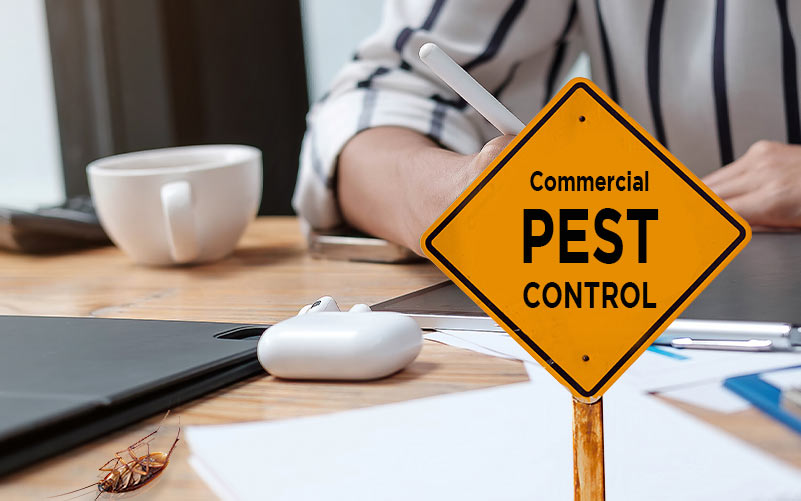Bed Pest Treatment Breakdown: Contrasting Chemical Vs. Non-Chemical Solutions
In the world of bug control, especially when handling the persistent issue of bed bugs, the option in between chemical and non-chemical therapy services can be a crucial one. Both methods use distinct benefits and drawbacks, affecting variables such as effectiveness, security factors to consider, and overall expense. By analyzing the nuanced information of each method, a clearer understanding of which course to pursue in addressing a bed bug invasion can be acquired.
Efficiency of Chemical Therapies
Chemical treatments for bed pest invasions have actually been widely identified for their potent and fast effectiveness in eradicating these insects. When thinking about the efficiency of chemical treatments, it is crucial to recognize that they can supply a fast and thorough solution to a bed pest trouble. Expert pest control experts typically rely on pesticides to target bed bugs at numerous stages of their life cycle, including eggs, nymphs, and grownups. These chemicals typically work by disrupting the bed bugs' nerve system, resulting in paralysis and eventual death.
Additionally, chemical treatments have the benefit of using recurring effects, indicating that they can remain to remove bed bugs even after the initial application. This residual action is specifically helpful in combating any prospective re-infestations. Furthermore, the rapid action of chemical treatments can bring relief to people facing extreme bed bug problems, allowing them to gain back control of their home quickly.
Security Worry About Chemical Solutions
One crucial facet that calls for careful consideration when utilizing chemical solutions for bed bug treatment is making certain the safety and security of residents and the atmosphere. Direct exposure to specific chemicals used in bed bug treatments can lead to breathing issues, skin inflammation, or other adverse reactions, specifically in people with pre-existing problems or sensitivities.
Moreover, the ecological impact of chemical solutions is one more considerable factor to consider. Some chemicals used in bed insect therapies might be hazardous to useful pests, wildlife, and environments if they seep into the soil or water systems. It is vital to use chemical treatments carefully, complying with security standards, and taking into consideration less poisonous options to mitigate these risks and make sure the secure and reliable monitoring of bed pest problems.
Benefits of Non-Chemical Approaches
Considering the prospective security problems and environmental impact associated with chemical options for bed pest treatment, checking out non-chemical techniques offers an encouraging option with a number of unique advantages. Non-chemical treatments are environmentally pleasant, as they do not add to air or water air pollution, making them a lasting option for bug control.
In addition, non-chemical solutions can be efficient in targeting bed bugs, consisting of hard-to-reach locations where chemical therapies might not permeate. Techniques such as warm treatment, vacuuming, vapor cleaning, and mattress encasements give comprehensive obliteration without using dangerous chemicals. Moreover, non-chemical approaches can be less turbulent, calling for minimal prep work and permitting quicker reentry into dealt with locations. Overall, selecting non-chemical bed pest therapy techniques not only focuses on security and environmental management but also ensures efficient and detailed pest control.
Limitations of Non-Chemical Treatments

Furthermore, non-chemical therapies frequently need numerous applications to achieve effective obliteration. This can be lengthy and may not constantly ensure complete elimination of all bed insects and their eggs, specifically in covert or hard-to-reach areas.
Furthermore, the success of non-chemical treatments heavily depends on appropriate implementation and thoroughness, which can be testing for individuals without specialist competence. Poor application of non-chemical methods might cause incomplete eradication, bring about consistent invasions and the demand for extra treatments.
As a result, while non-chemical treatments have their benefits, termidor termite treatment it is vital to recognize these restrictions and consider them when identifying the most efficient strategy for managing bed insect infestations.
Expense Comparison: Chemical Vs. Non-Chemical Options
Given the restrictions related to non-chemical treatments, an essential element to review in the context of bed bug monitoring is the cost contrast between chemical and non-chemical alternatives. Chemical treatments typically i loved this include the application of insecticides by experts, which can vary from $250 to $900 per area, depending upon the severity of the invasion and the size of the location to be dealt with. On the other hand, non-chemical therapies like warmth treatment or steam can be a lot more expensive, with prices varying from $1,000 to $6,000 for an entire home. While the initial price of chemical therapies might seem lower, numerous therapies may be called for to totally get rid of the invasion, possibly increasing the total expense. On the various other hand, non-chemical choices might offer a more sustainable and eco-friendly remedy, although they can be cost-prohibitive for some people. Eventually, when taking into consideration the price of bed insect treatment choices, it is necessary to weigh the in advance expenditures versus the performance and long-lasting sustainability of the chosen technique.
Verdict

Taking into consideration the potential safety problems and ecological impact linked with chemical services for bed pest therapy, checking out non-chemical techniques offers an appealing choice with a number of distinct benefits.Offered the limitations linked with non-chemical therapies, a vital element to evaluate in the context of bed pest management is the cost comparison in between chemical and non-chemical options. In contrast, non-chemical treatments like warmth therapy or heavy steam can be much more pricey, with costs varying from $1,000 to $6,000 for a whole home. While the initial cost of chemical therapies may appear lower, several treatments might be needed to totally get rid of the invasion, potentially raising the general expense.In verdict, when comparing chemical and non-chemical bed bug therapy choices, it is necessary to think about efficiency, security, benefits, constraints, and price.
Comments on “High Quality A1 Pest Control Services Charlotte - Protect Your Home”